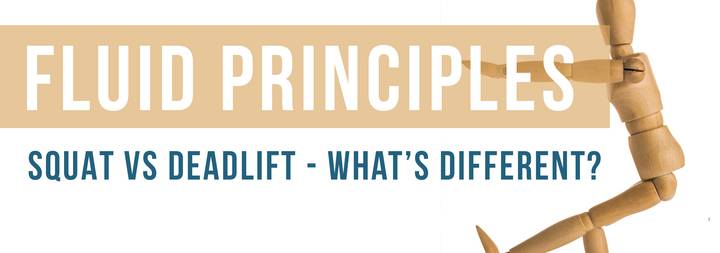What are the technical differences between a squat and a deadlift?
Both squats and deadlifts are compound exercises that target multiple muscle groups and are commonly performed in strength training programs. While they have some similarities, the two exercises have distinct technical differences. Here are some of the key differences:
• Starting Position: In a squat, the lifter begins by placing a loaded barbell on the upper back (high bar position) or across the traps and rear delts (low bar position). The lifter stands with feet shoulder-width apart or slightly wider. In contrast, the deadlift starts with the barbell on the floor, and the lifter stands with feet hip-width apart, gripping the bar with straight arms.
• Movement Pattern: Squats involve bending of the knees and hips simultaneously. The lifter lowers their body by flexing at the knees and hips, maintaining an upright torso position, and then returns to the starting position by extending the hips and knees. Deadlifts primarily involve hip hinge movement, where the lifter hinges at the hips, pushes their hips back, and lowers their torso toward the ground while keeping their back straight. They return to the starting position by driving the hips forward and standing up.
• Bar Path: The barbell generally moves vertically during a squat, staying over the midfoot. In a deadlift, the barbell follows a straight path up and down, remaining close to the legs throughout the lift.
• Muscle Emphasis: Squats primarily target the quadriceps, hamstrings, and glutes, while also engaging the core, calves, and lower back. Deadlifts mainly target the posterior chain, including the hamstrings, glutes, erector spinae, and traps. They also work the core, forearms, and upper back.
• Grip: Squats typically use either a high bar position (across the upper traps) or a low bar position (across the posterior deltoids). The lifter’s grip is generally wider, allowing for upper back tightness and stability. Deadlifts often use a double overhand grip, but as the weight increases, a mixed grip (one hand pronated, the other supinated) is commonly used to enhance grip strength and prevent the bar from rolling out of the hands.
• Range of Motion: Squats involve a deeper range of motion, where the lifter descends until the hips are below the knees (in a full squat). Deadlifts have a shorter range of motion, typically stopping when the lifter is upright.
• Equipment: Squats can be performed using a barbell, dumbbells, kettlebells, or bodyweight alone. Deadlifts are commonly performed with a barbell, but variations such as trap bar deadlifts or dumbbell deadlifts can also be used.
It’s important to note that squats and deadlifts require proper form and technique to ensure safety and maximize benefits. You should learn the correct technique and progress slowly if you’re new to these exercises.



